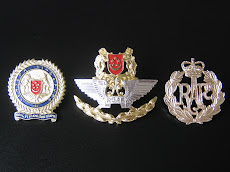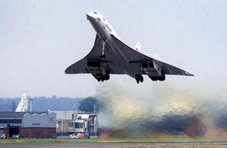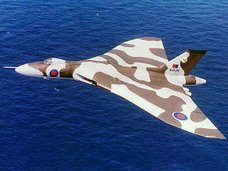A380 or B747-8: Which is the better option?
by Max Kingsley-Jones for FLIGHT INTERNATIONAL
UNTIL the emergence of Boeing’s 747-8 as a firm programme last year, Airbus had the 400-plus-seat market all to itself with its 550-seat A380, but now faces a serious challenge in both the passenger and freighter sectors from the 450-seat 747-8, so expect the two sides to exchange blows as they explain why their offering is the right solution for the world’s congested passenger and freight routes.
The 747-8 family was launched in November as a major derivative of the 747-400, on the back of 34 orders from cargo carriers Cargolux and Nippon Cargo Airlines. Powered by a bleed-enabled version of the 787’s General Electric GEnx, the new family incorporates a slight stretch, increased weights, revised wing with raked wingtips and upgrades to the cabin and flightdeck. Compared with the 747-400, the changes provide the 747-8 Intercontinental passenger model with 34 more seats in a three-class layout (to 450 seats), increased range – to 14,800km (8,000nm) – and improved efficiency, with a 16% lower fuel burn per seat and 8% lower operating cost per seat. The -8 Freighter provides 16% more revenue volume than the 747-400ERF, while revenue payload increases by almost 20% to 133.9t (294,900lb).
Cargo leads
Although all orders so far have been for the cargo model, Boeing is confident it will also garner sales for the 747-8I passenger version, which plugs the “200-seat gap” between the A380 and large widebodies like the A340-600, 777-300ER and 747-400. Boeing believes this gap is wide enough to enable it to penetrate the existing A380 customer base with the new 747, and lists 39 “candidate customers” (including passenger and freight divisions of airlines). Almost all these carriers are existing 747 operators, and 12 are airlines or cargo carriers that have already ordered the A380. The list of potential customers include 21 Asian carriers/cargo airlines, and Boeing is convinced it has a good chance of picking off some A380 customers.
Airbus appears undisturbed by the arrival of competition from Seattle, dismissing it as nothing more than a warmed-over 747. “Boeing is stretching a 40-year-old design to the limit,” says director of product marketing A380, Richard Carcaillet.
“The new model enters service 40 years after the 747-100, and has the same old wing, same old cockpit as the -400, and same old cabin – there is no improvement from the 1960s comfort standard,” says Carcaillet. “There is no development potential, and no engine choice,” he adds.
Boeing obviously has a slightly different take on the 747 legacy. Randy Baseler, Boeing Commercial Airplanes vice-president, marketing, believes the connections to the 747 give the new model an important commonality advantage with the in-service fleet. He also says that the derivative design has not compromised the 747-8’s efficiency. “If you look at the efficiency measures of aircraft design, we’ve an advantage over the A380 despite being a derivative,” he says, pointing to the later generation engines and claimed lower empty weight per seat of the 747-8 compared to its Airbus rival. These factors mean that the 747-8I burns 13% less fuel per seat than the A380, he says.
While acknowledging that the A380’s all-new wing – versus a modified version of the 747-400’s on the -8 – gives it an aerodynamic advantage, Baseler says that in other measures it is advantage Boeing.
“The A380 is between 10% and 16% per seat heavier than the 747-8. The 747-8’s OEW [operating empty weight] per seat is 453kg [998lb] compared with 498kg per seat [using Airbus’s brochure weight numbers] for the A380,” says Baseler. He says Boeing calculates the A380 is over 20% heavier per seat than the 747-400, and to match its structural efficiency “the A380 needs to be stretched to over 650 seats”.
The net result of these efficiencies is that the 747-8I’s operating costs are 22% lower than the A380’s per trip and 6% lower per seat, says Baseler.
However, Carcaillet claims that the 747-8 will be faster on approach – 160kt (296km/h) vs 138kt for the A380 – and despite a 20% higher thrust-to-weight ratio it will be a poor climber, as unlike the A380 it will require a one-step climb to FL330 (33,000ft/10,100m). He says that the new Boeing can only be made to “look good by bending the facts” with the claims based on “a gross exaggeration of the A380’s weight and fuel burn. The reality is that the A380’s fuel burn per seat is 2% lower than the 747-8’s. The 747-8’s cost per trip is just 12% lower than the A380’s, while the cost per seat is 9% higher – the A380 is still the most fuel-efficient large widebody ever.”
Wherever the truth lies within these operating cost claims, few would dispute Airbus’s view that the all-new A380 design with its double widebody-deck configuration will provide airlines with “game-changing” opportunities. “The A380 has 35% more capacity than the 747-400, and a 21st century seat width [18.5in/47cm],” says Carcaillet (see graphic). “The 747-8I provides just an 8% increase in capacity – this is less than two years’ growth – has 40% less floor space than the A380 and a seat width from the 1970s [17.2in].”
But Baseler expects the relatively small size increase of the 747-8 will play to Boeing’s advantage. “The 747-8 is the only airliner in the 400- to 500-seat category, and here our operating cost advantage offers a significant improvement over the A380,” he says. “But if you really need a 550-seater, then you’ll need the A380 as the revenue from the additional passengers outweighs the seat-mile cost advantage of the 747-8. That’s why we forecast a market for 300 aircraft in that [500-seat plus] category over the next 20 years.”
Boeing says the fact that the -8 is smaller than the A380 and has commonality with the current 747 fleet makes it a “significantly lower market risk” as it can use “existing infrastructure and ground equipment at more than 210 airports worldwide”, but Airbus believes 747-8 operators could find things otherwise. “With its 68.5m wingspan, the 747-8 is a Code F aircraft [airport handling classification] like the A380,” says Carcaillet, adding that the span limit for Code E (the 747-400’s class), is 65m.
Taking the lead
“This means the 747-8 has to meet the same requirements as the A380,” he says, “more perhaps as it has the same number of wheels as the 747-400, but increased weight, so it will have a very high ACN,” (Aircraft Classification Number, which measures the load footprint on a runway).
But arguments about the pros and cons of the 747-8I and the A380-800 are academic at the moment, as Boeing has yet to sell a passenger model. This is a point Airbus chief operating officer customers John Leahy is quick to make, and he is unconvinced that his rival will manage to break out from the freight market. “Our competitor sold a few 747-8 freighters. This’ll be the first time in the history of aviation that anyone has made a successful programme out of just freighters,” he says.
But Baseler says that, while Boeing has the “option to do the -8 programme as a freighter only”, he is confident the first orders for the 747-8I passenger model are close. “We expect we will have some orders for the -8I this year,” he says.
Boeing points out that, despite the lack of success so far with the 747-8 passenger model, the freighter outsold its Airbus rival handsomely last year. The manufacturer claims that, although it gives away around 18t in payload to its rival and has less cargo volume, the 747-8F has a 15% lower operating cost per tonne over the A380, and a 20% lower trip cost.
An important carry-over from the existing 747Fs, which has appeal to the general cargo operators, is the upward hinging nose cargo door that allows outsize loads to be carried. Boeing also highlights the fact that the new 747 can slot into existing 747-400F schedules, as it uses existing 747 cargo-handling equipment, whereas the A380 requires a unique high-loader to access its upper deck, which will make it difficult to operate “off route”.
Airbus’s Carcaillet says the huge cost advantages Boeing claims for the 747-8F are again due to “gross exaggeration” of the A380’s fuel burn and weight – the latter to the tune of 13t. “The reality is that the A380F’s cost per tonne is comparable to that of the 747-8 on short ranges,” he says, adding that “comparisons at short range ignore the unique non-stop range of the A380F”. He says that on long-range flights with maximum structural payload, the A380F’s cost per tonne is 15% lower.
Airbus has conceded that, while it does not see the 747-8I as a threat, the freighter could dilute the A380’s sales in the cargo sector, but believes an airliner programme cannot have a solid business case built purely around cargo demand. “Of course the 747 is a good a freighter – all they’re selling are freighters,” says Leahy. “But you can’t make an aircraft programme around an aircraft that is just a freighter. If you want a balanced aircraft programme like we have with the A380 you will sell probably about three-quarters of your models as passenger aircraft and the rest as freighters.”
Package popularity
Express package carriers have ordered the bulk of the A380Fs to date, while the 747-8F was launched by two general cargo airlines, which Boeing says indicates the Airbus freighter’s configuration is suited to carrying the heavier, higher-density loads normally associated with general freight carriage. But Carcaillet disputes this: “The A380F will fly 150t non-stop, whatever the density,” he says. “At a similar range, according to Boeing, the 747-8F will carry 113t only, which is less than today’s 747-400ERF with a stop.”
Given Boeing’s long-standing pessimism about the size of the ultra-large-aircraft market, Airbus could be forgiven for mocking the fact that its rival has now apparently “seen the light”. Shortly after the 747-8 programme was launched last year, Airbus chief executive Gustav Humbert congratulated his rival “for following the Airbus market view on large-aircraft demand”.
The fact is that Boeing has consistently in recent years been pessimistic about the market for aircraft in the 500-seat-plus category – the A380’s bracket – where its 20-year forecast is currently put at 300 passenger aircraft. In comparison, Airbus has continued to be firm in the belief that 20-year demand for ultra-large aircraft (450-seats plus) is in excess of 1,000 aircraft – its latest forecast putting demand at 1,250 aircraft (excluding freighters).
However, Boeing’s long-term forecast for overall demand in the “747 and larger” sector (400-seat-plus passenger aircraft and large freighters) has varied dramatically over the last decade from a high of 1,600 in 1996, when it was poised to launch a 550-seat 747 stretch family, to a low of 790 in 2004. Significantly, last year Boeing bucked the recent trend by increasing its forecast (by 15%) to 907 units as it prepared the ground for the 747-8 launch, having consistently reduced its outlook each year in the period 2001-4.
“Airbus’s ultra-large-aircraft forecast is consistent, Boeing’s follows every twist and turn,” says Carcaillet.
Boeing’s decision to finally join its rival in the ultra-large-aircraft sector has livened up the proceedings, after Airbus had things its own way for five years. It will be another five years at least until it becomes clear who has got it right, but one thing is for certain – the airlines at last have what they always wanted and that is a choice of supplier at the top end of the size spectrum.
SOURCE: Flight International
Wednesday, April 26, 2006
Tuesday, April 18, 2006
>>> Modified B747 freighter for shipping B787 parts
by Derek Yeo - SINGAPORE - 18 Apr 2006
IN MAJOR modifications, Boeing is configuring three 747-400s to Large Cargo Freighter (LCF) specifications. These ultra large freighters will be used to support the B787 Dreamliner's production.
The modified cargo airplane took shape in March 2006 when the brow (a step-up fuselage section just aft of the upper-deck cockpit) was merged with the rest of the similarly-enlarged upper body.
The LCF’s voluminous interior – at 65,000 cu ft or three times Boeing 747-400’s capacity – can easily accomodate and ferry large B787 airframe parts.
Boeing 747LCF will test-fly this summer, to be followed by airworthiness certification targeted at end-2006. The aircraft will begin service in 2007.
SOURCE: Boeing Aircraft Company
Posted by
Derek Yeo
on
Tuesday, April 18, 2006
0
comments
![]()




